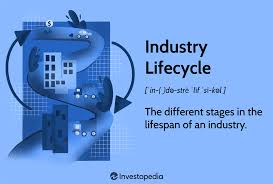Introduction
Every successful digital product — from Netflix to Slack — started as a simple idea that evolved through a structured product engineering lifecycle. This lifecycle bridges innovation and execution, ensuring that creative ideas turn into scalable, secure, and user-friendly products.
In this guide, we’ll walk through each stage of software product engineering, explaining how top product engineering services companies convert concepts into market-ready solutions.
1. Ideation & Strategy
Everything begins with understanding the “why.”
At this stage, product engineering consultants collaborate with stakeholders to define:
- Business goals and user needs
- Target audience and success metrics
- Market validation and competitor benchmarking
Tech feasibility assessments are conducted to ensure that the product vision aligns with practical implementation.
2. Design Thinking & Prototyping
Once the idea is validated, UX and UI designers create wireframes, interactive mock-ups, and prototypes. The focus is on user experience, accessibility, and simplicity.
Rapid prototyping tools (Figma, Adobe XD) help stakeholders visualize workflows before coding begins.
Early testing with real users reduces rework later in development.
3. MVP Development
The MVP (Minimum Viable Product) phase transforms ideas into a working model with essential features.
- Agile sprints focus on high-priority functionalities.
- DevOps pipelines ensure fast, iterative releases.
- Feedback loops drive continuous improvement.
This stage minimizes risk while ensuring faster market entry.
4. Full-Scale Product Engineering
Once the MVP proves value, teams scale the product for broader adoption.
Software product engineering services here include:
- Advanced integrations (APIs, third-party systems).
- Architecture optimization for performance and scalability.
- Security enhancements and compliance alignment.
Leading product engineering firms integrate analytics and observability to measure performance in real time.
5. Testing & Quality Engineering
Testing is not an afterthought — it’s woven into every sprint.
Modern QA practices include:
- Automated functional testing
- Performance and load testing
- Security and compliance testing
- Usability and A/B testing
A mature product engineering services company ensures defect-free releases and continuous regression coverage.
6. Deployment, Support & Continuous Improvement
Post-launch, focus shifts to reliability, uptime, and user feedback.
- Cloud monitoring (AWS, Azure, GCP) tracks performance metrics.
- Feedback from analytics and customer usage drives new feature development.
- Predictive maintenance ensures stability.
This stage is where continuous innovation keeps products relevant.
Conclusion
The product engineering lifecycle is not a straight line — it’s a cycle of discovery, delivery, and evolution. Great product engineering companies treat every release as a new opportunity to learn and improve, ensuring products don’t just launch — they last.
read more : Beyond the Basics: A Deep Dive into Game Testing Methods

